Marrakech is a global destination for shopping and handicraft enthusiasts. In its historic souks, an enchanting world of traditional products unfolds, telling stories of Morocco’s rich heritage and artistic skills passed down through generations. In this comprehensive guide, we’ll take you on an exploratory journey to discover the most important traditional products of Marrakech, the ideal shopping locations, and provide practical tips for enjoying a unique and rewarding shopping experience. Whether you’re looking for authentic souvenirs, artistic pieces to decorate your home, or simply wish to explore Moroccan culture through its traditional crafts, this guide will be your ideal companion.
The Most Prominent Traditional Products You’ll Find in the Souks of Marrakech
The traditional products offered in Marrakech are diverse and include many famous handicrafts that attract visitors from all over the world. Here are the most notable:
Babouches
Babouches are a type of traditional Moroccan footwear made from soft leather and characterized by their pointed or rounded tips. They come in various vibrant colors such as yellow, red, blue, and gold, and are often adorned with intricate artistic embroidery. Babouches exist in different styles, some suitable for everyday indoor use, others more luxurious for special occasions. They make lightweight and easy-to-carry souvenirs, embodying an authentic part of Moroccan culture.
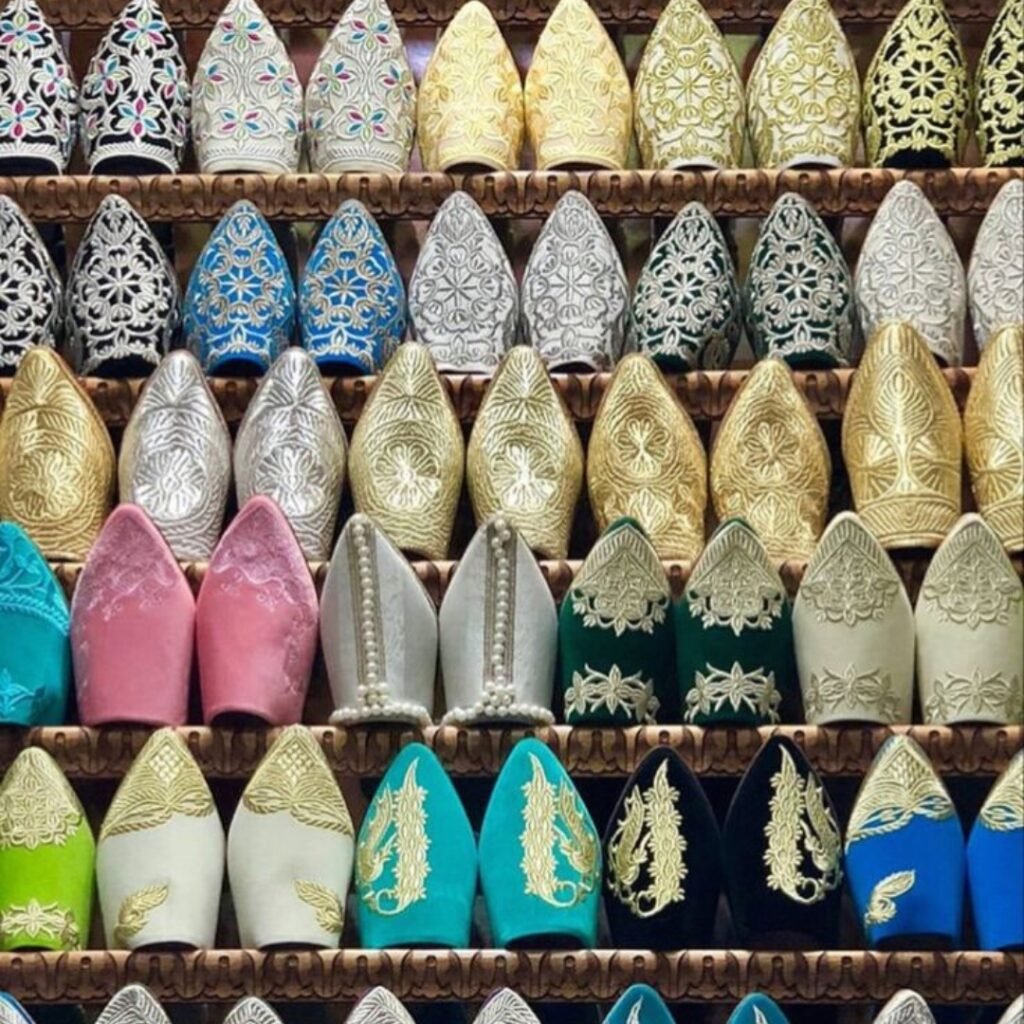
Zellij and Ceramics
Zellij is one of the most famous forms of Moroccan architectural art, composed of colorful mosaic pieces, hand-carved and arranged in complex geometric patterns. You can purchase this art in the form of small tables, fountains, or decorative panels. As for Moroccan ceramics, they are known for their blue and white Fez style, and are available in Marrakech souks as plates, vases, and colorful tajines. Each piece carries a unique artistic touch and reflects the skill of Moroccan artisans.

Kaftans and Embroidery
The Moroccan kaftan is an elegant traditional garment for women, made from luxurious fabrics and adorned with complex embroidery. Marrakech is known for the diversity of its Moroccan embroidery styles that appear not only on kaftans but also on cushions, tablecloths, and traditional djellabas. Each region of Morocco has its own distinctive embroidery style, making the acquisition of an embroidered piece equivalent to owning a part of Moroccan cultural heritage.
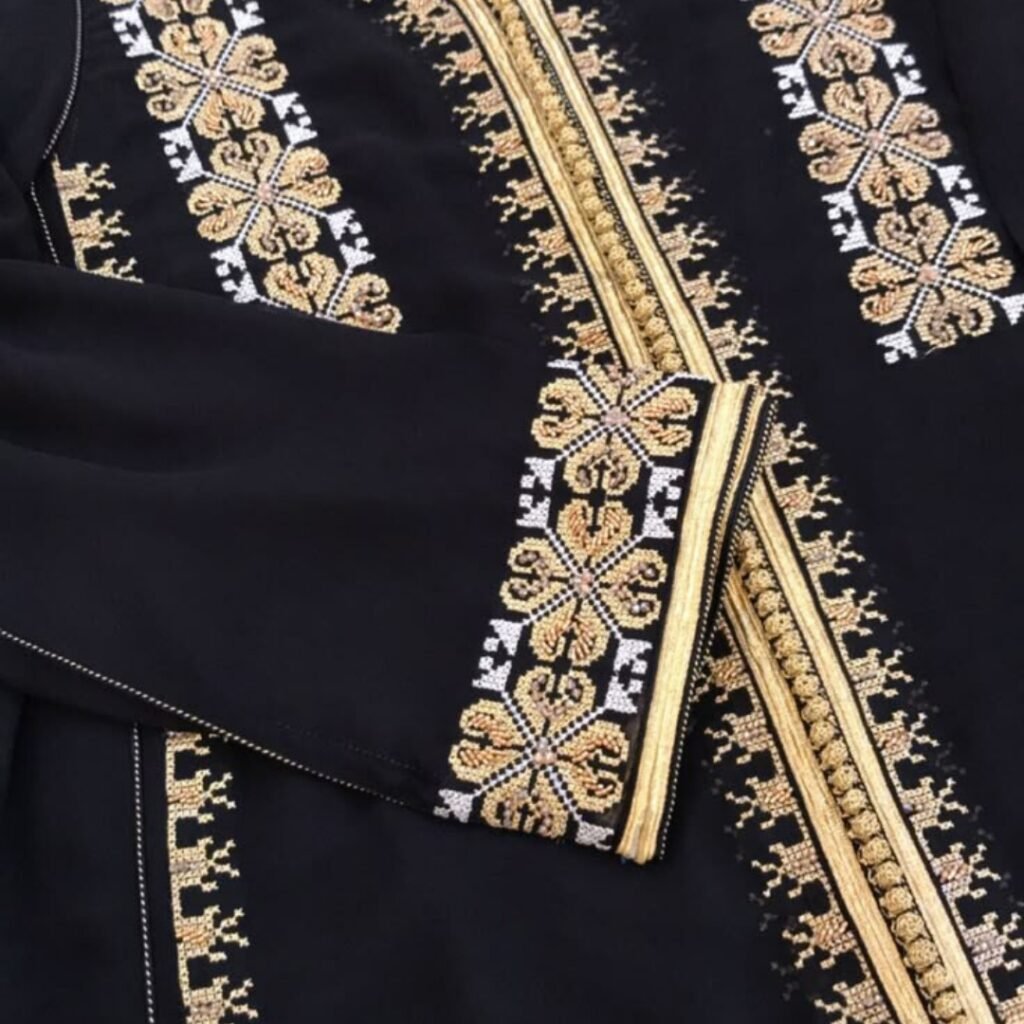
Leather Bags
Marrakech is famous for its high-quality leather products, particularly bags of all shapes and sizes. In its souks, you’ll find handbags, backpacks, wallets, and poufs (decorated leather seats). The quality of these products is due to the traditional tanning methods used in Marrakech’s famous tanneries, where leathers are treated with natural materials that give them durability and distinctive color.
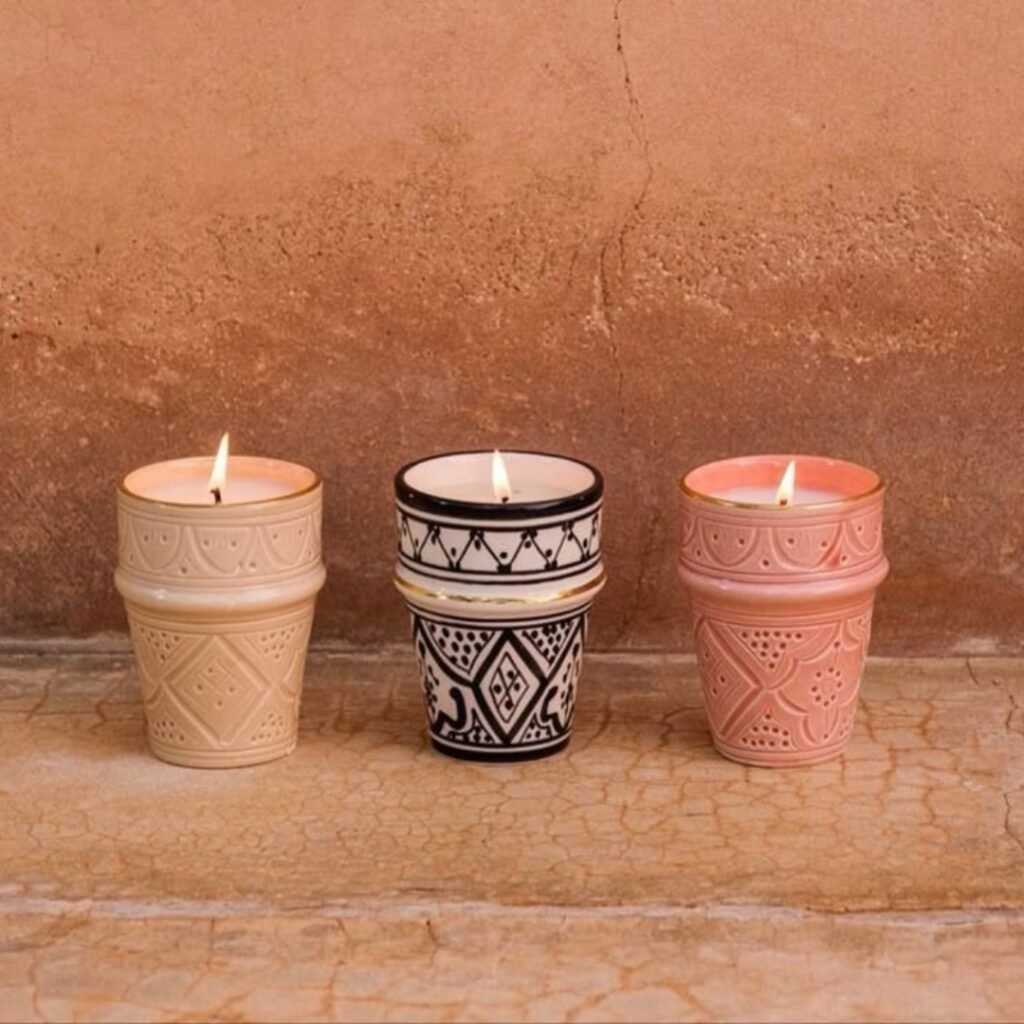
Carpets
Moroccan carpets are among the most precious traditional products that can be acquired in Marrakech. Their styles vary between Berber carpets with geometric patterns and long pile, flat kilims, and city carpets with delicate floral motifs. Traditional carpets are generally made of natural wool, and their weaving can take weeks or even months. You can find a wide range of carpets in dedicated sections within the souks or in specialized shops.
Scented Candles
Moroccan scented candles are distinguished by their artistic shapes, vibrant colors, and aromatic scents inspired by local ingredients such as rose, jasmine, and aromatic herbs. These candles are handmade and presented in decorated ceramic or glass containers, making them not only a source of pleasant fragrance but also an elegant decorative piece that brings an authentic Moroccan touch to any home.
Metal Artifacts
Marrakech souks are full of metal objects made of copper, bronze, and silver-plated metals. Among the most famous of these objects: decorated lanterns that diffuse enchanting light patterns, engraved trays, mirrors, traditional tea sets, and decorative plates. These pieces are characterized by meticulous engravings and decorations achieved through the technique of engraving or manual hammering.
Wooden Boxes
Moroccan wooden boxes are works of art typically made from cedar wood or thuya wood (particularly from the city of Essaouira). These boxes are decorated with carvings or inlays of metal, ivory, or mother-of-pearl. They are used to store jewelry or as elegant decorative pieces and are considered valuable souvenirs that last a long time.
Where to Shop for Traditional Products in Marrakech? A Guide to Souks and Shops
Most traditional products in Marrakech are concentrated in one place: the famous Marrakech souks, but there are also other options…
The Souks of Marrakech
The souks of Marrakech extend like a vast labyrinth of passages and narrow alleys directly north of Jemaa el-Fna square. These souks are divided into specialized sections: Souk Semmarine for textiles and leather, Souk Cherratine for leather products, Souk Smata for babouches, Souk Dhabia for jewelry, and the Spice Souk for spices and herbs. This is where you’ll find the greatest variety of traditional products mentioned previously, and you’ll enjoy an authentic shopping experience that addresses all the senses.
Large Stores and Showrooms
For those who prefer to shop in peace, away from the hustle and bustle of the souks, there are large stores and showrooms in more accessible areas. These shops offer carefully selected products at fixed prices (without bargaining) and often provide international shipping services for larger items such as carpets or furniture.
Artisan Associations and Cooperatives
Visiting artisan associations and cooperatives is a unique experience where you can observe artisans at work creating their pieces. These places offer products at reasonable and generally fixed prices, and most importantly, you directly support the artisans. These cooperatives can be found near the historic Ben Youssef Madrasa or in the Mellah district.
Hotel and Riad Shops
Some large hotels and riads (traditional houses converted into hotels) have small shops selling a selection of traditional products. Prices may be higher here, but they offer a comfortable shopping experience and high-quality products.
The Shopping Experience in Marrakech Souks: Bargaining and Practical Tips
Shopping in the souks of Marrakech is a cultural experience in itself, and the art of negotiation is an integral part of it…
The Art of Bargaining: How to Negotiate Effectively and Politely?
Bargaining is an essential part of shopping culture in Morocco. To master this art, start by offering a lower price (about 30-50% of the displayed price), always be friendly and smiling, take your time, and be ready to walk away if the price doesn’t suit you. Remember to only start negotiating if you’re serious about buying, and know that the goal is to reach a fair price that satisfies both parties.
Payment Options: Cash First
It’s advisable to carry enough cash (Moroccan dirhams) when shopping in the souks, especially for small purchases. Larger shops may accept credit cards, but it’s better to check in advance. Most small vendors in the souks only accept cash.
Navigating the Maze: Don’t Be Afraid to Get Lost
Part of the charm of Marrakech souks lies in the experience of getting lost in its intricate alleys. Don’t worry about getting lost; it’s part of the adventure! You can use digital map applications that work offline or identify landmarks to help you find your way back. And if you feel disoriented, you can ask for help from a local guide.
Checking Product Quality
Examine products carefully before buying them: look for quality stitching in leather products, the number of knots in carpets, and the precision of details in metal objects. For important purchases like carpets, it’s best to deal with reputable shops or cooperatives.
The Craftsmanship and Authenticity Behind Marrakech’s Traditional Products
What distinguishes the traditional products of Marrakech is the skill and perfection passed down through generations of Moroccan artisans. Each piece tells a long story of traditions, expertise, and art. Visiting workshops in the souks or cooperatives enhances your appreciation of these crafts, where you can observe artisans creating artistic pieces that combine beauty and practical functionality.
Visiting Marrakech Souks: A Practical Guide and Important Tips
To make your visit to Marrakech souks enjoyable and fruitful, here are the most important information and tips…
How to Access the Souks
The souks of Marrakech are located directly north of Jemaa el-Fna square. You can first go to the square, then head north to enter the souks. They can be easily accessed by taxi that drops you off near the square, or through the main gates of the medina leading to the souks.
Souk Opening Hours (Approximate)
Most souk shops typically open in the morning around 9:00 or 10:00 AM and remain open until the evening around 7:00 or 8:00 PM, with a possible closure at lunchtime. Most shops close during Friday prayer, so keep this in mind when planning your visit.
It is recommended to allow at least 2-3 hours to walk around and explore the souks, and longer if you intend to do serious shopping. Wear comfortable shoes and be prepared to deal with crowds and narrow passages, especially in covered sections that can be hot or stifling on summer days.
The Link Between Traditional Products and Jemaa el-Fna Square
Jemaa el-Fna square is the main gateway to the souks of Marrakech. While the souks offer the vast majority of traditional products, the square itself is often the starting or ending point of the shopping experience. You can find some simple products and snacks on the square, but to discover the real treasures, you need to venture into the alleys of the souks.
Conclusion: Marrakech’s Traditional Products… Souvenirs Reflecting a Rich Heritage
Marrakech offers an incomparable shopping experience, with an amazing diversity of traditional products that reflect the richness and depth of Moroccan heritage. From colorful babouches to hand-woven carpets, from embroidered kaftans to decorated metal objects, each piece carries with it a part of the spirit and culture of this enchanting city.
We encourage you to explore the souks of Marrakech, to search for traditional products that catch your attention, to practice friendly negotiation skills, and to enjoy a unique cultural experience. Whether you return with a bag full of gifts, or content yourself with a single special piece, the memories of shopping in Marrakech will stay with you for years to come.
Share your personal experiences and discoveries in the souks of Marrakech, and tell us which traditional products are your favorites!


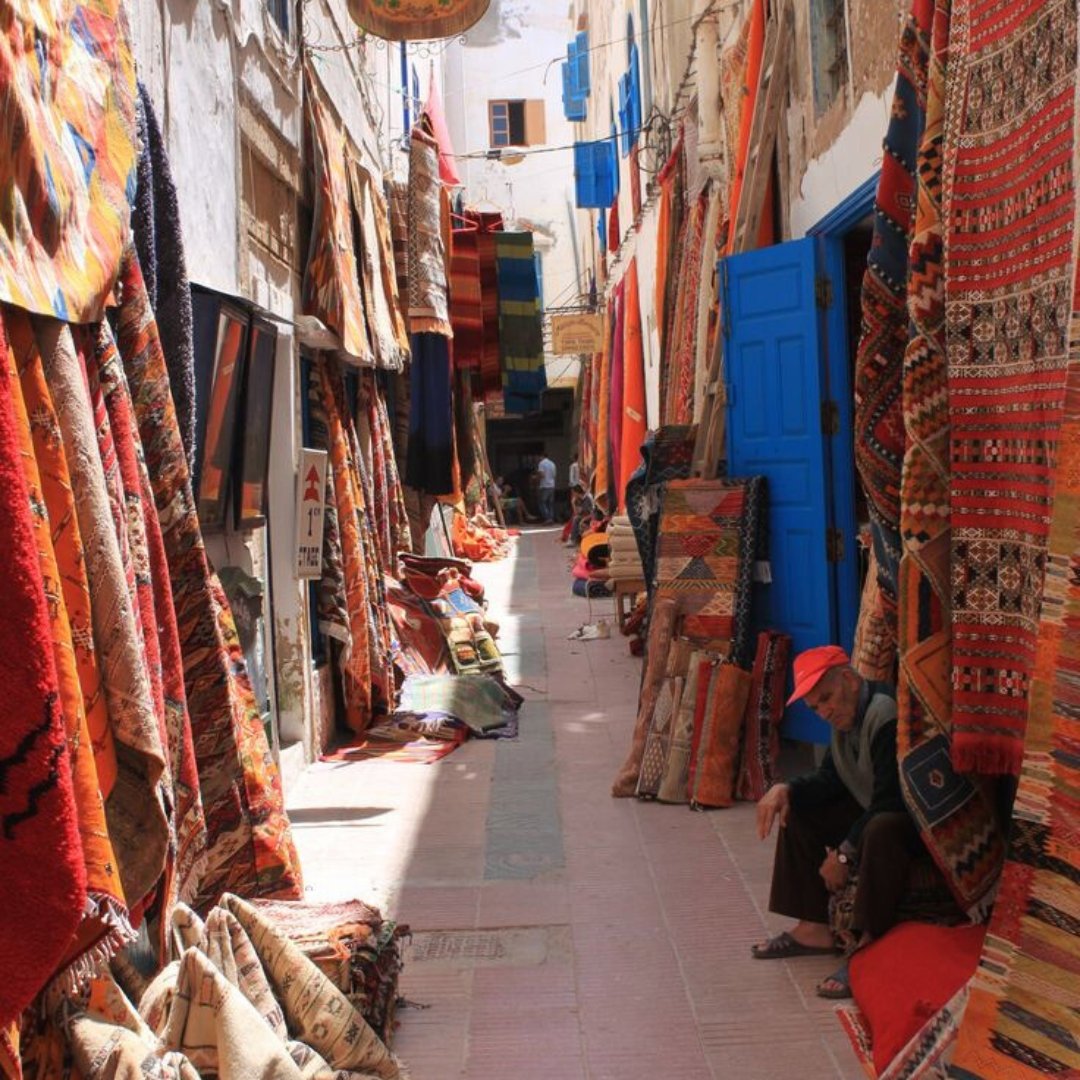
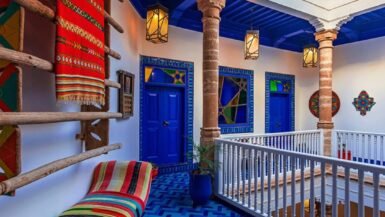


Leave a reply